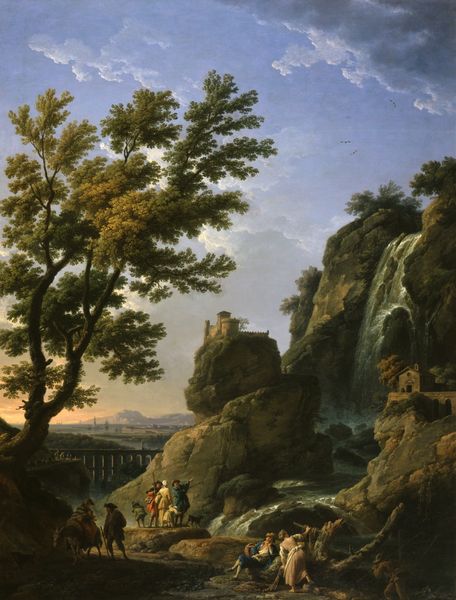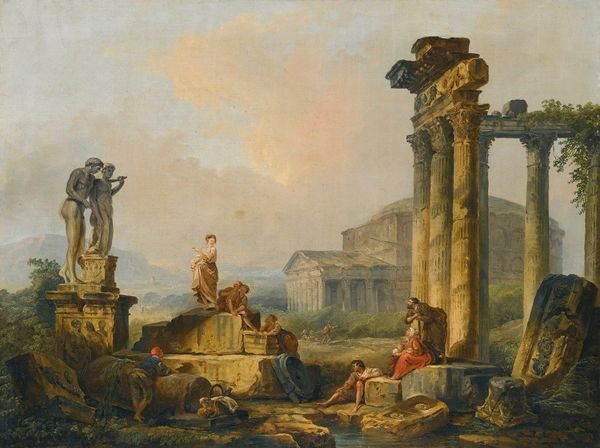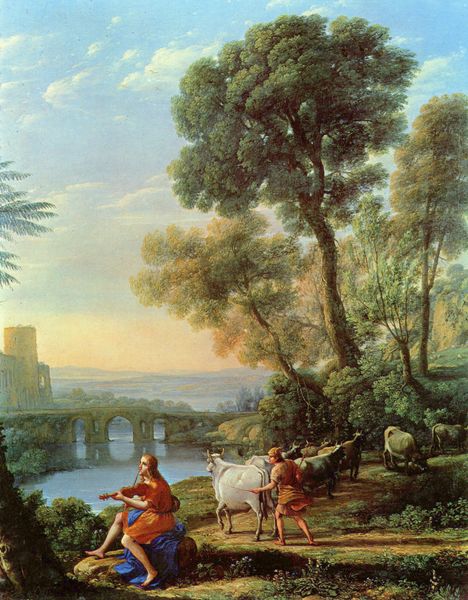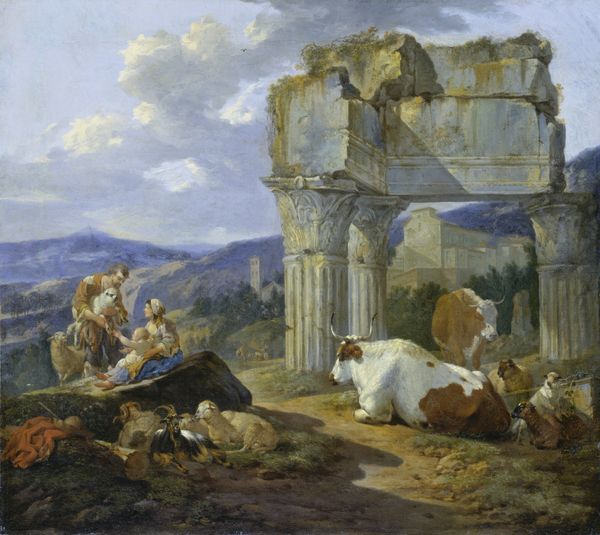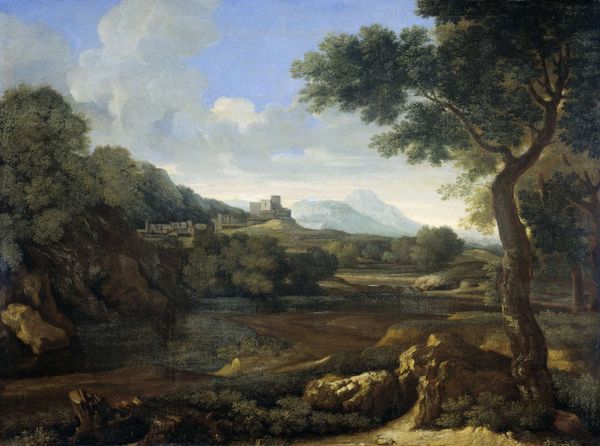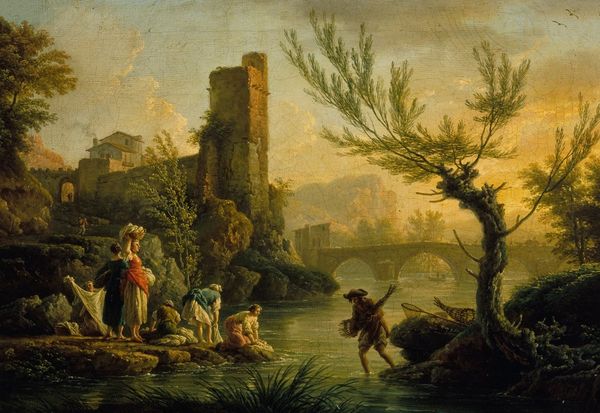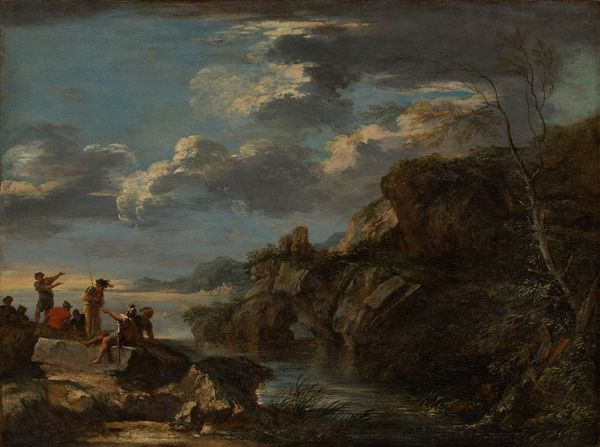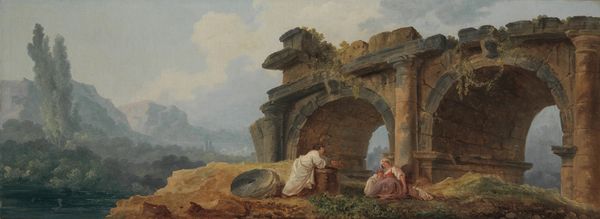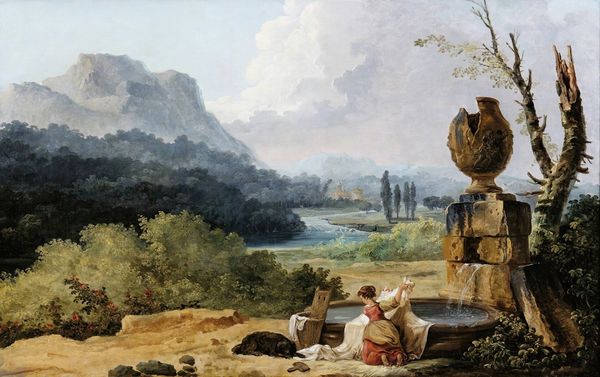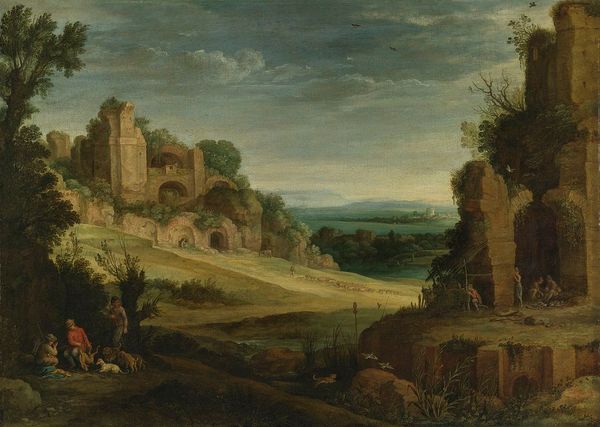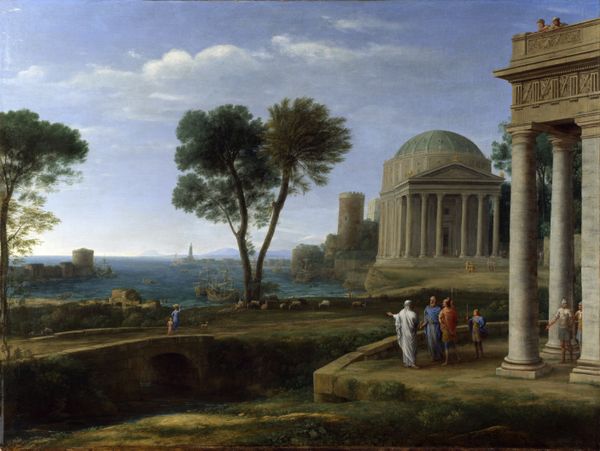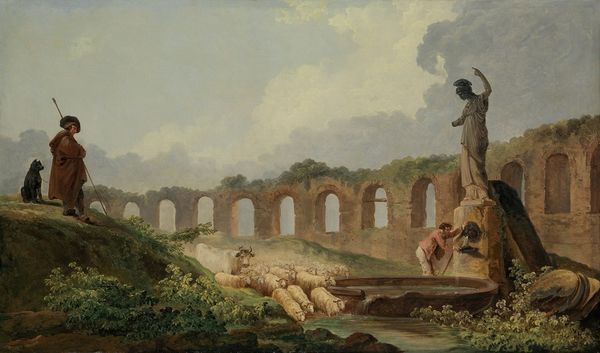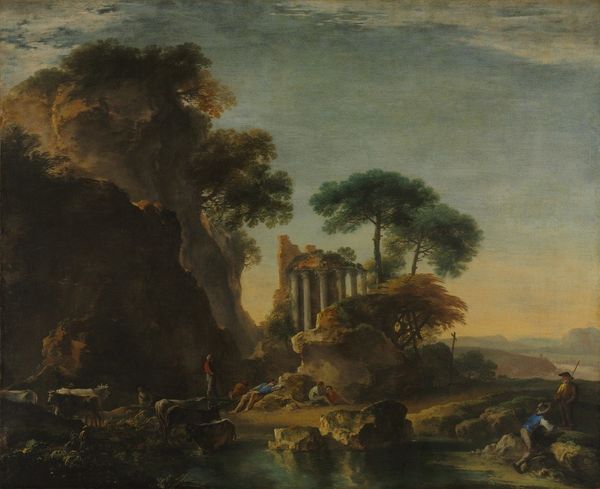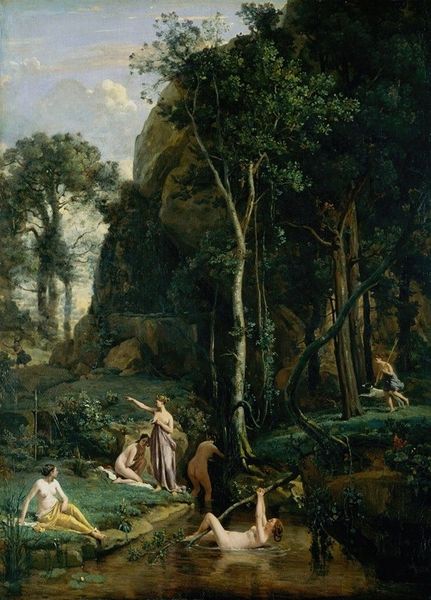
painting, oil-paint
#
baroque
#
painting
#
oil-paint
#
landscape
#
classical-realism
#
figuration
#
oil painting
#
history-painting
#
academic-art
#
realism
Copyright: Public domain
Editor: This is "Landscape with Saint John on Patmos," an oil painting by Nicolas Poussin. There's something serene and almost mathematically precise about the composition, but it's a bit... cool? What stands out to you as you analyze the work? Curator: The initial draw is certainly the composition. Consider how Poussin manipulates the spatial planes. Observe the calculated arrangement of trees and classical ruins – a deliberate organization guides our eye. Notice, too, the strategic use of light, particularly the way it falls across the classical forms, defining their edges. What does the interplay of light and shadow evoke in you? Editor: The light makes everything very tangible, like you could reach out and touch the bark of the trees or feel the coolness of the marble ruins. Curator: Precisely. It’s not just about rendering; it's about imbuing those forms with a presence, a sense of existing within a constructed space. Look at the way Poussin differentiates the textures - the smoothness of the saint's cloak versus the roughness of the architectural fragments. The organization dictates its meaning. Do you see the emphasis on formal arrangement over narrative drama? Editor: Yes, the placement of every element seems considered, as if the story is secondary to the structure. I noticed that the buildings, the saint and even the river are all carefully located at separate vanishing points in the canvas. The unity is great and no component seems alien. Curator: Exactly. The meticulous execution and idealized form become the subject itself, offering a glimpse into a world governed by order and reason. The narrative of Saint John is a vehicle for exploring the aesthetics of form and the inherent logic of pictorial space. Editor: That emphasis on form over subject really reshapes how I view the painting. The clarity makes it seem almost timeless. Curator: Indeed. By engaging with these elements, Poussin invites us to appreciate the formal principles that underpin the artwork’s meaning and elevate it beyond mere representation.
Comments
No comments
Be the first to comment and join the conversation on the ultimate creative platform.
